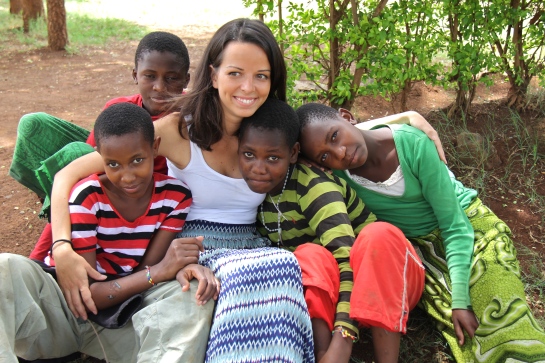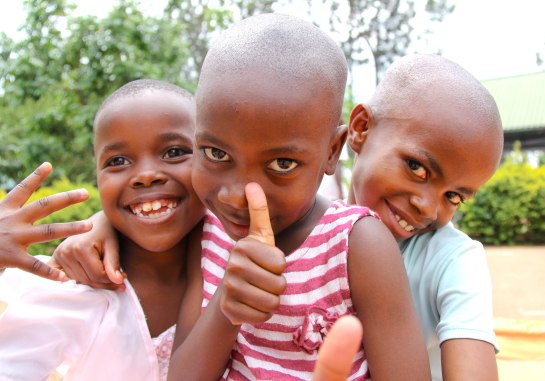 Saying goodbye is always rubbish. It’s sad and utterly exhausting, and can serve as a painful reminder of the fact that those we hold dear will not always be around, and may be there for the last time as you hug, kiss or wave goodbye. But it’s also the flip side of love, of affection and of compassion; it is the necessary heart-breaking yin to love’s heart-making yang. Without the other neither would be as meaningful or half as powerful. Without the sadness of a goodbye we’d never realize how deep that connection we share can really be; how what was once so alien can become so familiar and so precious.
Saying goodbye is always rubbish. It’s sad and utterly exhausting, and can serve as a painful reminder of the fact that those we hold dear will not always be around, and may be there for the last time as you hug, kiss or wave goodbye. But it’s also the flip side of love, of affection and of compassion; it is the necessary heart-breaking yin to love’s heart-making yang. Without the other neither would be as meaningful or half as powerful. Without the sadness of a goodbye we’d never realize how deep that connection we share can really be; how what was once so alien can become so familiar and so precious.
And after so much yang here at Amani, it was time for our inevitable dose of yin. After an adorable, tear-jerking leaving ceremony with the children yesterday afternoon – complete with tears, hugs, speeches, songs, and lollipops – today was our last day at the centre. Deep down I had dreaded this day, as had Boogie, and played the day out a million times over in my head, thinking: How will I feel? How will the children react? How will I pull off the proverbial bandage without too much sadness both on our part and on theirs? I’d cried and agonized over it, only realizing in these past weeks what a deep mark they had left on us both and how much it would hurt to say that final goodbye. I always knew that goodbye would be worse for us – they see people coming in and out of their lives more than most – but their timid and beautifully heartfelt goodbyes yesterday had made me dread the moment even more.
We’ve really grown to love these tenacious, funny and almost unfailingly lovely kids. Their spirit – that childlike innocence that survives and thrives regardless of tough, even tragic circumstances – never seized to amaze me. Their resilience and ability to bounce back after abuse, loneliness and endless hungry nights on the streets will never leave me. The fact that the weight of the world has not gotten them down is as good of a testament to the strength of the human spirit as anything I can imagine. (And the fact that they can be so open and so kind while going through puberty is frankly amazing.) I would never have internalized this lesson had it not been for them. I would never have known, really known deep down, the power we all carry within us if I hadn’t spent this half a year getting to know street children in Africa.
And then suddenly, after a good 130 days at Amani, countless afternoons playing football or teaching reading for Boogie, dancing to Michael Jackson with the girls or playing improvised board games on the yard for me, it had all come to an end. As the afternoon sun started setting over the yard, all the kids gathered in the dining hall to watch Home Alone II. We grabbed our backpack from the office, walked into the room, waved a quick goodbye and left with tears welling up in our eyes. A few kids ran after us and gave us a hug, but most, even if teary-eyed, stayed glued to the screen. It was probably for the best that we left them there that way: 70 kids packed on a few benches, hunched over each other or lying on the floor, packed like little raggedy sardines, utterly focused on soaking up every bit of Swahili-dubbed hilarity that Macaulay Culkin could muster up. We tried our best to catch the attention of the kids we’d grown closest to but I’m not sure we managed. I hope we did. I hope they know how much they meant to us. I hope they always will, even if our memory – like most memories at that age – eventually fades into a far-flung corner of their ever-malleable, ever-changing minds.
I cried as we walked home on those strangely familiar, dusty paths, flanked by beautiful bougainvillea in bloom and people tending their tiny farms – an almost ludicrously idiosyncratic and painfully idyllic African scene. I guess I cried because the goodbye seemed so final – with kids coming in an out of the centre you never know who’s there next week, let alone next year – and because my nostalgia for this place and for all the people in it suddenly seemed so raw, real and inescapable.
Sitting here I feel utterly drained and blessed at the same time. A really funny dinner with our (adult) friends and colleagues took the edge off all the sadness and introspection. As did making this with our fellow volunteers. And tomorrow’s full of stuff to do, so I should really hold on to at least some of the melodrama for later…
But for now, dear friends at Amani: Tutawakumbuka wote. Mara kwa mara. (We will remember you all. Always.) And I really hope to see you soon, somewhere, someday.
-K&B








